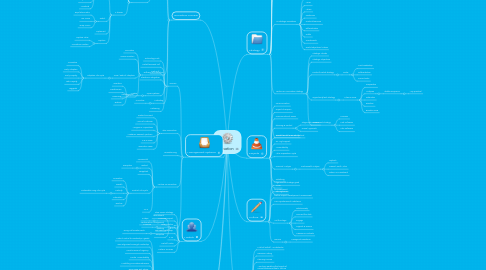
1. Management Systems
1.1. Sources
1.1.1. Technology Push
1.1.2. Market/Demand Pull
1.1.3. Push-Pull
1.1.4. Electronic Integration
1.1.5. Open Systems
1.1.5.1. Nodes
1.1.5.1.1. Inventors
1.1.5.1.2. Transformers
1.1.5.1.3. Financiers
1.1.5.1.4. Brokers
1.1.6. Partnering
1.2. Idea Generation
1.2.1. Product Focused
1.2.2. Voice of Customer
1.2.3. Mergers & Acquisitions
1.2.4. Academic Research partners
1.2.5. R & D Team
1.2.6. Innovation Team
1.3. Brainstorming
1.4. Lecture on Innovation
1.4.1. Incremental
1.4.2. Radical
1.4.2.1. Disruptive
1.4.3. Reapplied
1.4.4. Product Life Cycle
1.4.4.1. Innovation
1.4.4.2. Growth
1.4.4.3. Maturity
1.4.4.3.1. Sustainable Long Life Cycle
1.4.4.4. Saturation
1.4.4.5. Decline
1.4.5. 4 P's
1.5. HR
1.5.1. Recruitment
1.5.2. Performance Management
1.5.3. Training
1.5.4. Discipline
2. Models
2.1. Blue Ocean Strategy
2.2. McKinsey Report
2.2.1. 8 steps
2.3. Peter Drucker
2.3.1. 7 sources
2.4. Fail Fast, Fail Cheap
2.4.1. Doug Hall Eureka Ranch
2.5. 4 P's
2.6. Anshoff Matrix
2.7. Porter's 5 Forces
3. Improving Innovation Performance
3.1. Make it central to Leadership Agenda
3.2. Gain alignment amongst Leadership
3.3. Creat a sense of Urgency
3.4. Create Accountability
3.5. Modelling Innovation Behaviour
3.6. Encourage Risk Taking
3.7. Improve tools & Processes
3.8. Common Reasons for Failure
3.8.1. Inadequate Mkt Knowledge
3.8.2. Product Problems
3.8.3. Inadequate Marketing
3.8.4. Cost Overruns
3.8.5. Competitor Reaction
3.8.6. Poor Timing
3.8.7. Technological/Production Problems
3.9. 3 x Lecture on Innovative Organisations
3.10. Understanding Product Life Cycle
4. Intellectual Property
4.1. Schedule
4.2. Trademarks
5. Innovation Process
5.1. Planned / Emergent
5.2. Formats
5.2.1. Ahmed & Shepherd, 2010
5.2.1.1. Product Innovation
5.2.1.2. Process Innovation
5.2.1.3. Strategic Innovation
5.2.1.3.1. M & A's
5.2.2. Tidd & Bessant
5.2.2.1. Product
5.2.2.2. Process
5.2.2.3. Position
5.2.2.4. Paradigm
5.2.2.5. 4 Phases
5.2.2.5.1. Search
5.2.2.5.2. Select
5.2.2.5.3. Implement
5.2.2.5.4. Capture
5.3. Diffusion of Innovation
5.3.1. Innovation
5.3.2. Communication
5.3.3. Time / Rate of Adoption
5.3.3.1. Adoption Life Cycle
5.3.3.1.1. Innovators
5.3.3.1.2. Early Adopters
5.3.3.1.3. Early Majority
5.3.3.1.4. Late Majority
5.3.3.1.5. Laggards
5.3.4. Social System
5.4. Marketing
5.4.1. P. Drucker
6. Strategy
6.1. Snr Mgt Commitment
6.2. Long Term Strategy
6.3. Technology Strategy
6.4. Stage on Product Life Cycle
6.5. Long Term Commitment to Projects
6.6. Acceptance of Risk
6.7. Accountability
6.8. 10 Strategic Questions
6.8.1. Mission
6.8.2. Vision
6.8.3. Values
6.8.4. Customers
6.8.5. Products/Services
6.8.6. Differentiation
6.8.7. Profits
6.8.8. Scoreboards
6.8.9. Goals/Objectives/Actions
6.9. Lecture on Innovation Strategy
6.9.1. Strategic Thrusts
6.9.2. Strategic Objectives
6.9.3. Product/Market strategy
6.9.3.1. Porter
6.9.3.1.1. Cost Leadership
6.9.3.1.2. Differentiation
6.9.3.1.3. Focus/Niche
6.9.4. Opportunity/Risk strategy
6.9.4.1. Miles & Snow
6.9.4.1.1. Prospectors
6.9.4.1.2. Analysers
6.9.4.1.3. Defenders
6.9.4.1.4. Reactors
6.9.4.1.5. Brendan NNB
6.9.5. Time Based Strategy
6.9.5.1. Pioneers
6.9.5.2. Fast Followers
6.9.5.3. Late Followers
6.10. Revisit 'Good to Great' Flywheel
7. Projects
7.1. Communication
7.2. Project Champion
7.3. Cross Functional Teams
7.4. Planning & Control
7.4.1. Stage Gate Process
7.4.2. Funnel Approach
7.5. Orientation to users' needs
7.6. Snr Mgt Support
7.7. Accountability
7.8. Value Proposition Cycle
7.9. Financial Analysis
7.9.1. Cost Benefit Analysis
7.9.1.1. Payback
7.9.1.2. Present Worth Value
7.9.1.3. Return on Investment
7.10. Satisficing
7.11. 'PAID'
7.12. Herringbones
8. Culture
8.1. Alignment to strategic goals
8.2. Empowerment
8.3. Define Project Development Measurement
8.4. Four Syndromes of Unbalance
8.5. Set the Stage
8.5.1. Risk/Diversity
8.5.2. Connect the dots
8.5.3. Engage
8.5.4. Support & Govern
8.5.5. Measure & Motivate
8.6. Barriers
8.6.1. Managerial Resistance

